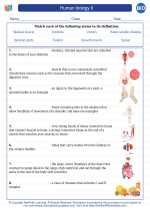Communication in Biology
Communication in biology refers to the process by which living organisms exchange information with one another. This exchange of information can occur through various mechanisms, including chemical, visual, auditory, and tactile signals. Communication is essential for coordinating various biological processes, such as mating, foraging, and defending against predators.
Types of Communication
There are several types of communication observed in biology:
- Chemical Communication: Many organisms release chemical signals called pheromones to communicate with members of the same species. Pheromones can signal the presence of food, the readiness to mate, or the presence of danger.
- Visual Communication: Some organisms, such as birds and bees, use visual signals, including body language and color displays, to communicate with others.
- Auditory Communication: Many species, such as frogs and birds, use sound signals to communicate. This can include mating calls, warning calls, and territorial calls.
- Tactile Communication: Some organisms, such as primates, communicate through physical touch, such as grooming or hugging.
Significance of Communication in Biology
Communication plays a critical role in various biological processes, including:
- Mating and Reproduction: Organisms use communication to attract mates and coordinate mating behaviors.
- Foraging and Food Acquisition: Many species communicate the location of food sources to other members of their group.
- Warning and Defense: Communication is used to warn others of potential danger, such as the presence of predators or other threats.
- Social Organization: Communication helps in establishing and maintaining social hierarchies within groups of organisms.
Examples of Communication in Biology
Some examples of communication in biology include:
- Honeybee Waggle Dance: Honeybees perform a unique "waggle dance" to communicate the location of food sources to other members of the hive.
- Chimpanzee Grooming: Chimpanzees use grooming as a form of tactile communication to strengthen social bonds within their groups.
- Birdsong: Birds use complex songs to communicate with potential mates and establish territory boundaries.
- Ant Pheromone Trails: Ants lay down pheromone trails to communicate the location of food sources and guide other members of the colony.
Study Guide
When studying communication in biology, consider the following key points:
- Understand the different types of communication observed in organisms and the specific signals used in each type.
- Explore the significance of communication in various biological processes, such as mating, foraging, and defense.
- Examine specific examples of communication in different species and how they contribute to survival and reproduction.
- Consider the evolutionary implications of communication and how it has shaped the behavior of different organisms.
By understanding the mechanisms and significance of communication in biology, students can gain insights into the complex and fascinating ways in which organisms interact and thrive in their environments.
.◂Biology Worksheets and Study Guides High School. Human biology II
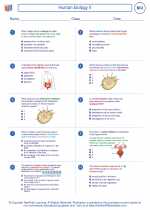
 Worksheet/Answer key
Worksheet/Answer key
 Worksheet/Answer key
Worksheet/Answer key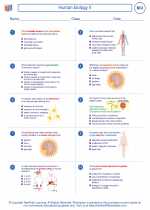
 Vocabulary/Answer key
Vocabulary/Answer key
 Vocabulary/Answer key
Vocabulary/Answer key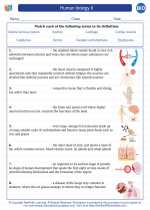
 Vocabulary/Answer key
Vocabulary/Answer key
 Vocabulary/Answer key
Vocabulary/Answer key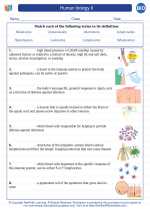
 Vocabulary/Answer key
Vocabulary/Answer key
 Vocabulary/Answer key
Vocabulary/Answer key
 Vocabulary/Answer key
Vocabulary/Answer key